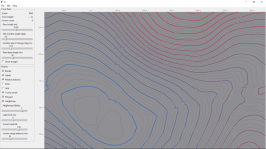While working on the pit road for Portland I needed to figure out some maths having to do with the pit road. I knew where I wanted the blend line to start, where the wall should start and where the SF straight should be. So I took my data and made it into a calculator that will give us the positions for the pit road elements based on those variables. :-D
Not much testing but it worked in this single scenario. The reverse could be done if you wanted to work back from pit exit to the start of the pit wall but the calc would need some tweaking.
Also a side note... if you want a curved blend line you need to move the first control point to somewhere other than the pit straight. Never would have figured that out without
@Mr Grumpy's Highlands track. That also solves the problem of banking into the home straight, so next time you start a track start it on the most nondescript part of the track :-p
Since I didn't originally but I did save my polygon I was able to use the left key to move the start position back a few hundred meters and everything was fine. Then I copied my bankings over in two sections (from new start to old end, old start to new end) and copied the height points over *cough* It'll crash if ya don't! *cough*. However it doesn't crash even though the height points are out of order. The id callups work just fine in the original positions. Not sure how the elevation/Ted+elevation editors will handle that though. Luckily I saved my backups as profiles so it shouldn't be an issue to redo it if need be when I go to rough up Portland a tick.
@eran0004 your course creator has made life so easy for road, deco and pit placement with the ruler!!! I'm half tempted to redraw Sebring again before deco placement. I just can't do it again though...




 )
)
